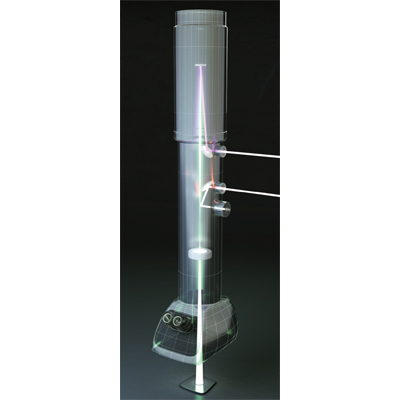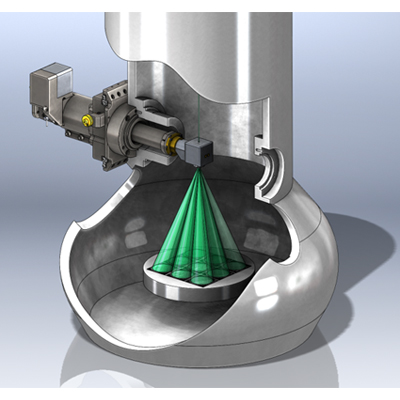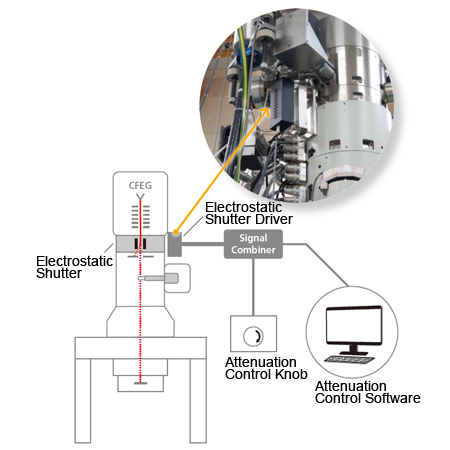Luminary Micro Compact Specimen Photoexcitation System
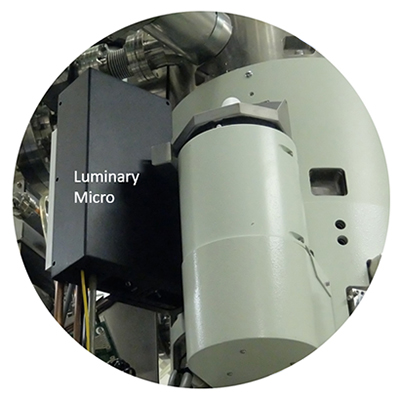
Features
Up to 3 W peak power
Tight focusing (<40 µm FWHM)
Temporal profile from µs to s
Remote control of focus position, laser power, pulse duration
Extremely compact footprint
No sacrifice for the freedom of choice of specimen holders
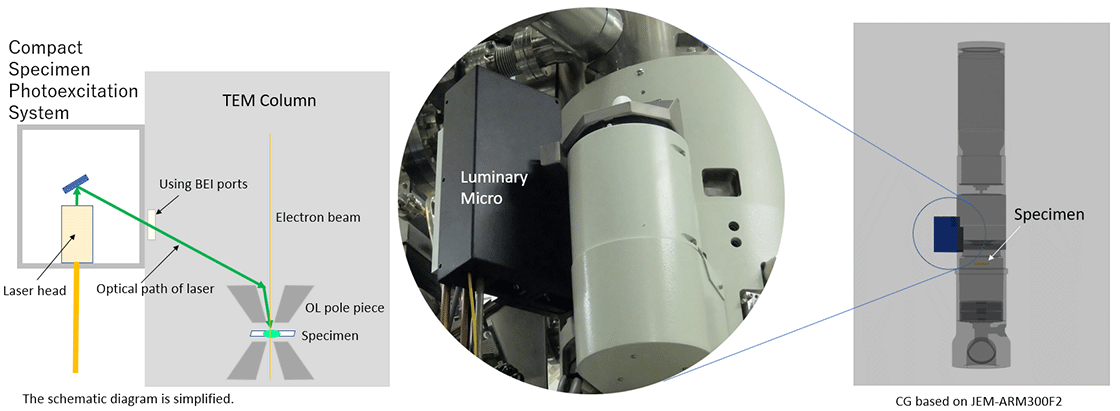
Luminary Micro is a Compact Specimen Photoexcitation System (CPXS) for JEOL TEMs.
It is composed of a modulated laser, a compact optical delivery system (µODS), an inlet port, and a mirror. With this add-on, users can direct and focus the laser output onto the TEM sample in situ.
The Luminary Micro can induce a rich variety of reactions and dynamic processes in the specimen, thanks to its focus size <40 µm FWHM, adjustable peak power up to 3 W, and the modulated pulse widths ranging from a few microseconds to seconds. With the Luminary Micro, users can study laser-induced phenomena in situ using fast cameras.
Combined with IDES/JEOL EDM fast shutter and/or Relativity subframing systems, Luminary Micro allows users to perform time-resolved studies using pump-probe methods in the microsecond time scale. Its footprint is extremely compact, and it can be easily installed without affecting the TEM resolution, yet it does not sacrifice the freedom of choice of specimen holders.
Specifications
| parameters | note | |
|---|---|---|
| wavelength | 577 nm (standard) | 532, 642, or 780 nm available upon request ※ |
| peak power | 3 W at 577 nm | 2 W at 532, 642, or 780 nm |
| rise time constant | 12.4 µs | |
| fall time constant | 5.1 µs | |
| focal length | 300 mm on 300 kV TEMs 250 mm on 200 kV TEMs |
|
| focus size (FWHM) | <40 µm on 300 kV TEMs <33 µm on 200 kV TEMs |
Chosen at the time of a purchase order.
Applicable model: JEM-ARM300F2, NEOARM*1, JEM-F200, JEM-2100F*2, JEM-2100Plus*2
Luminary Micro is available only when a probe Cs corrector is configured.
Luminary Micro is not available if a goniometer cover is configured.
Gallery
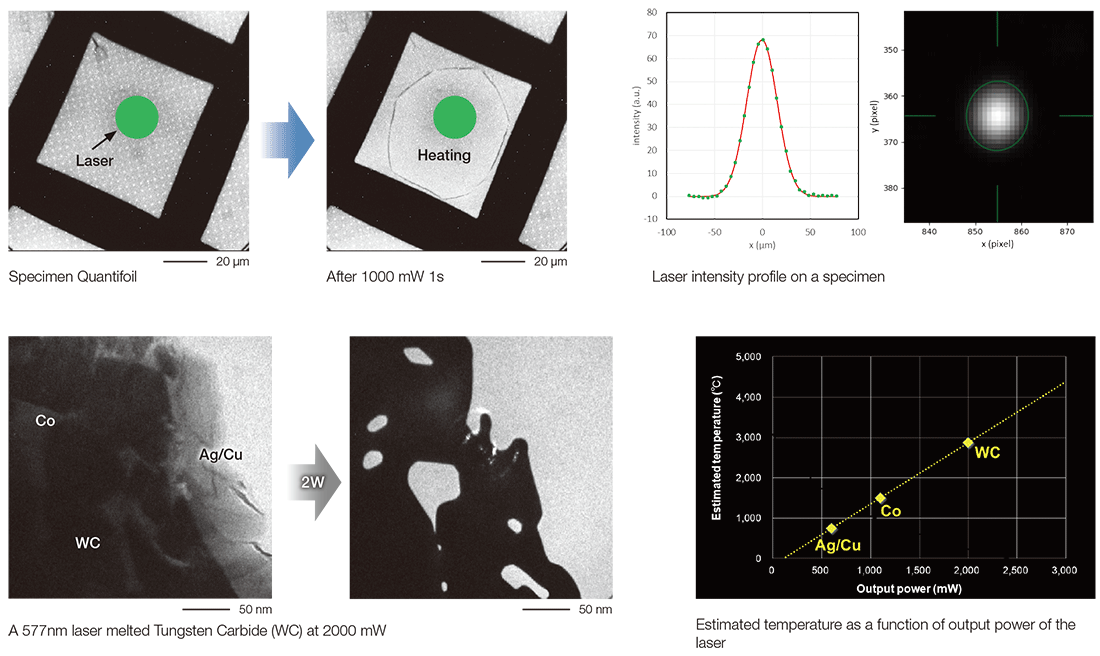
The growth process of carbon nanomaterials by laser irradiation
Atomic-resolution in-situ movies of growing carbon nanotubes and onion-shaped carbon nano structures in a transmission electron microscope (TEM). The structures were formed by laser irradiation of samples made of carbon films and iron nanoparticles.
This experiment was conducted using a JEOL 300kV Transmission Electron Microscope with a cold field emission gun, JEM-ARM300F, and a new system designed by JEOL subsidiary Integrated Dynamic Electron Solutions, Inc. for precisely focusing lasers onto TEM samples, Luminary Micro. This combination of high-performance imaging instrumentation and reduced sample motion due to precision-controlled rapid localized illumination enables extraordinary spatial resolution for in-situ experiments.
(Courtesy by Dr. Ryousuke Senga, Electron Microscopy Group, Nanomaterials Research Institute, Advanced Industrial Science and Technology (AIST) and Professor Kazutomo Suenaga, Department of Nanocharacterization for Nanostructures and Functions, Nanoscience and Nanotechnology Center, The Institute of Scientific and Industrial Research (ISIR: SANKEN), Osaka University)
Related Products
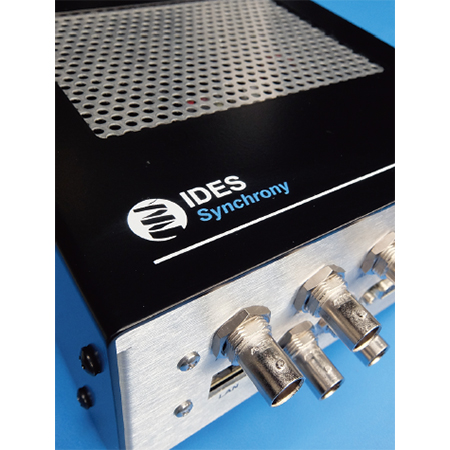
Programmable STEM with EDM Synchrony
Control the dose at every pixel.
The Electrostatic Dose Modulator (EDM) is a fast beam blanking system with a pre-sample electrostatic deflector, including electronics and software control. EDM can also attenuate electron illumination without affecting imaging conditions, giving TEM and STEM users more control over the dose on their samples.
The optional Synchrony upgrade takes EDM's timing and synchronization capabilities to the next level. Synchrony can coordinate with a STEM controller, tracking the probe beam location as it scans across the sample. EDM's lightning-fast electrostatic blanking turns the beam on for a specified time at each pixel, or keeps the beam blanked to completely exclude sensitive regions from dose.
More Info
Are you a medical professional or personnel engaged in medical care?
No
Please be reminded that these pages are not intended to provide the general public with information about the products.

